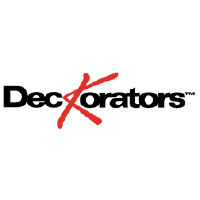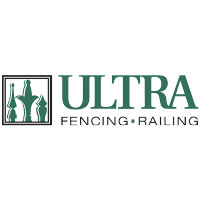Homeowners planning a new deck face a common crossroads: PVC vs. composite decking. Each type of decking has become a top choice for outdoor living spaces that call for beauty, durability, and minimal upkeep. If you’re feeling torn about which is best, you’re not alone. Drawing from years of deck building in St. Louis, our team has seen firsthand what works best in Midwest weather. This post lays out the facts in simple terms, so you can make the right choice for your backyard retreat.
PVC vs. Composite Decking: What Sets Them Apart?
When comparing PVC decking to composite decking, it helps to understand what’s behind each deck board.
While they are both considered durable alternatives to traditional wood decking, their differences affect everything from color range and slip resistance to price and eco-friendliness. Let’s break it down.
1. PVC Decking
Also called vinyl decking, PVC is made entirely from polyvinyl chloride (a synthetic polymer). These PVC deck boards don’t use any wood fibers in the manufacturing process. This matters for performance: pure plastic repels water, resists mildew, and stays strong in direct sunlight or by the pool. The result? A decking material that’s easy to keep looking fresh and lasts for decades with little worry. If you’re searching for vinyl decking solutions, you’ll see that PVC deck boards often have a crisp, uniform look with vibrant, lasting color.
Key Features and Benefits of PVC Decking
- Nearly Maintenance-Free: PVC decking is famous as a low-maintenance decking option. You won’t worry about splintering, warping, or staining.
- Long Lifespan: Since polyvinyl chloride repels water and resists mildew, these deck boards often last for 30 years or more.
- Flexible Looks: From solid colors to streaked wood grain effects, high-quality PVC brands like Azek and TimberTech offer plenty of style.
- Slip-Resistant Surfaces: PVC’s smooth, cell-structured surface offers better grip when wet. This makes it a great pick for pool decks or humid climates.
- No Insect Damage: Termites and other wood eaters don’t bother with synthetic materials.
- Excellent for Harsh Climates: PVC keeps its shape and color in intense heat or cold, resisting fading and weathering.
- Wide Range of Colors: You’ll find everything from deep browns to grays, blues, and even white tones.
While PVC decking often carries a higher upfront cost, its maintenance costs remain low for the life of the deck. That reliability is why so many homeowners in St. Louis choose it for complex decks or exposed installations.
2. Composite Decking
Composite decking is crafted by blending wood fibers and recycled plastic. It’s made to mimic the natural look of real wood, with textured wood grain patterns and a variety of colors. Modern composite decking solutions use technology to keep moisture out and slow down fading, making composite decking boards a reliable, low-maintenance decking choice.
Key Features and Benefits of Composite Decking
- Authentic Wood Look: Composite decking offers the warmth and texture of wood decking without the regular upkeep. Deck boards with deep wood grain patterns capture the natural look that many homeowners want.
- Vibrant Decking Options: Thanks to improved manufacturing, composite decking materials now come in nearly every color and finish you’d find in natural wood.
- Eco-Friendly: Many composite decking boards, especially from leading brands like Trex Composite and TimberTech Composite, are made with recycled materials. They help keep plastic and wood waste out of landfills.
- Stain & Fade Resistance: Newer composites use protective caps that shield surface color from sun and spills, so your deck looks newer, longer.
- Sturdy and Splinter-Free: Composites are unlikely to splinter, even after years in the sun and rain, which is a plus for bare feet and active families.
- Lower Upkeep: While not completely maintenance-free, composite decks only need light cleaning. No annual sanding, staining, or sealing required.
Advances in composite tech mean you get a high-quality deck that stands up to real use, whether you need sturdy deck railings or deck boards that last through harsh weather.
How to Choose: Comparing Cost, Maintenance, and Longevity
Selecting the right type of decking depends on your budget, lifestyle, and expectations. Drawing on real-life projects done right here in St. Louis, let’s see how these options stack up in practice.
Initial Investment and Long-Term Value
- Upfront Cost: PVC deck boards usually cost more per linear foot than composite decking. The elevated price comes from its pure polymer and production method, but it often pays off in lower maintenance costs.
- Composite Wins for Budget: Composite decking tends to be more cost-effective for large projects or if you want a look that’s close to real wood.
- Warranties: Both types offer strong warranties from the big names (like Azek, TimberTech, and Trex). Expect coverage of 25 to 50 years, depending on your decking material.
- Lifespan: PVC can edge out composite for longevity, especially in wet or full-sun sites. Composites, especially capped ones, aren’t far behind. Some premium lines even rival PVC for lifespan.
In short, if you plan to stay in your home and want a maintenance-free deck, PVC could be worth the higher initial cost. If budget matters or you prioritize an authentic wood look, composite decking is a smart, long-lasting investment.
For a closer look at material pricing and budgeting your project, Outdoor Living Inc. offers detailed deck cost estimation.
Maintenance Demands: What to Expect Over Time
- PVC Decking: Needs only an occasional hose-down to look sharp. No sanding, staining, or special cleaners. It’s a true low-maintenance solution.
- Composite Decking: Usually just needs soap and water, but some older lines might require a gentle scrub if moss or mold appears. Still, it’s much less demanding than traditional wood decking.
- Annual Upkeep: No deck is fully immune to the elements, but both options beat pressure-treated wood for ease of ownership.
If spending weekends on deck furniture instead of repairs sounds good, both PVC and composite materials are leagues ahead of natural wood.
Contact Outdoor Living Inc.
The best deck is one that fits your home, lifestyle, and budget. For St. Louis homeowners, the choice often comes down to looks, climate, and how much work you want to put in after installation.
If you’re unsure where to start, or just want honest advice from folks who install decks day in and day out, reach out to Outdoor Living Inc. Our team brings deep experience with all types of decking and can help you find the right solution for your outdoor space. Let us help you design and build a deck that’ll become your favorite spot at home if you love to host big gatherings or just relax quietly in the sun.
For more information on decking material choices, custom designs, and the advantages of composite or PVC decks, see our Composite Decking Solutions or learn about our approach to Custom Deck Designs. And if you’re leaning toward a certain style, don’t hesitate to ask for a free estimate—it’s the first step to the outdoor space you’ve always wanted.







